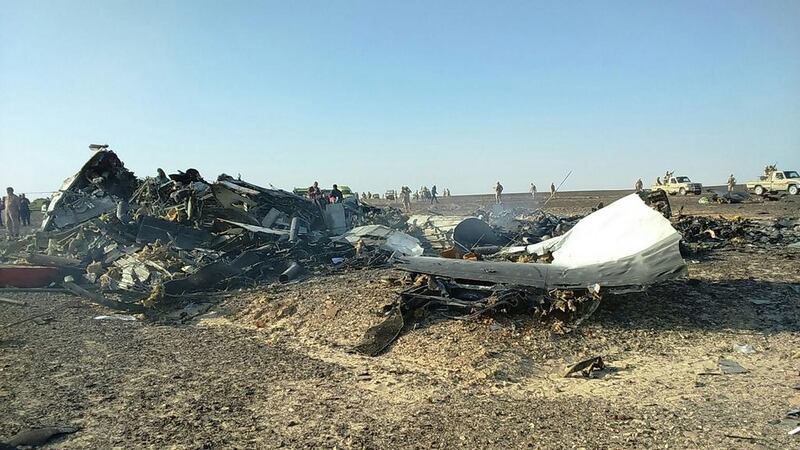Paris // Investigators probing the crash of a Russian passenger plane in the Sinai desert will be working on the following scenarios ranging from terrorism to human error.
ISIL downing
Experts have rejected the idea the ISIL group could hit an aircraft flying at 9,000 metres. “ISIL does not have the gear to knock out a plane at 9,000 metres,” said Gerard Feldzer, former director of France’s air and space museum, explaining that would require equipment such as a mobile radar tracking system and long-range missiles, which ISIL does not have.
To reach a plane at that altitude “you would need hard-to-use missiles”, added Jean-Paul Troadec, former director of France’s BEA aviation investigation agency.
“This requires trained people and equipment that ISIL does not have, to my knowledge,” according to Mr Troadec.
The theory that the plane was hit by a missile at a lower altitude also seems implausible to experts, who pointed out that such an attack would still take plenty of preparation.
Russian transport minister Maxim Sokolov was also quick to dismiss the idea, saying: “Our Egyptian colleagues and aviation authorities ... have no information that would confirm such insinuations.”
Terrorist attack
“A terrorist attack cannot be ruled out,” according to aviation experts, who argue a bomb could have been placed on board the aircraft.
“In terms of a bomb on the plane, whatever its size, if it explodes at an altitude of 10,000 metres, the plane will completely disintegrate because of the pressure,” said one military expert.
“But something could have happened lower down, or someone on board could have forced the pilot to descend, and an engine could have exploded when the aircraft was lower.”
Other experts pointed out that Egyptian airports are not very careful about baggage control.
Mechanical error
An official from Egypt’s air control authority said the captain had complained that the communication equipment had failed.
The Kogalymavia airline, operating under the name Metrojet, said the aircraft underwent safety checks last year, and Russian aviation agency Rosaviatsia said there was “no reason to consider that the cause of the disaster was a technical problem or a crew error”.
Separately, a Russian TV channel late on Saturday quoted the wife of the co-pilot as saying her husband had complained about the plane’s condition. Natalya Trukhacheva, identified as the wife of co-pilot Sergei Trukhachev, said that when his daughter called him before he flew out, “he complained before the flight that the technical condition of the aircraft left much to be desired.”
Human error
According to Metrojet, the captain, Valery Nemov, had more than 12,000 hours of flying experience, including 3,860 hours on the type of Airbus A321 he was flying at the time. Weather conditions were also fine.





